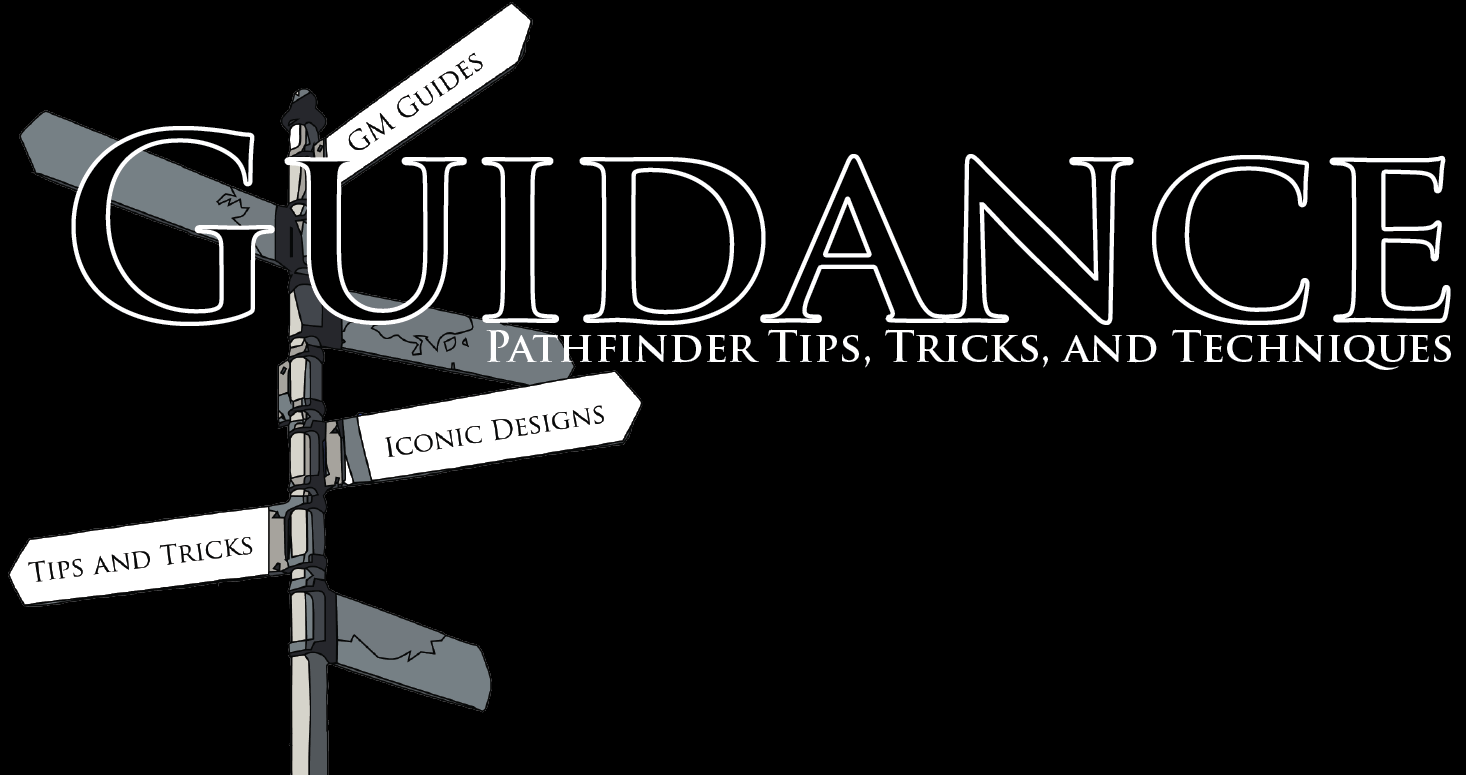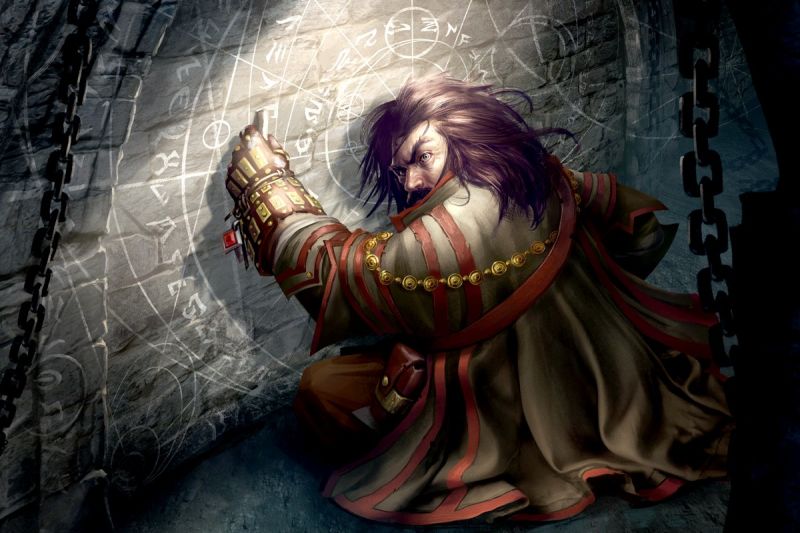Hey everyone, and welcome to Guidance! So two weeks ago I promised that my next blog entry would be about resonance. Well, last Monday I caught wind that Paizo was going to talk about resonance in an upcoming blog (specifically, this one) so I held off on publishing this article until the blog came out, naively hoping that it would be released as the Monday blog and my post would only be a few hours late. WHOOPS.
Regardless, I’m kind of glad that I DID wait, because a lot of what I was going to talk about regarding resonance and its intended purpose was covered by Paizo in this blog. It’s nice to not have to beat a dead horse! This did, however, cause me to have to delete the entirety of my original article and start from scratch this weekend….
Anyway, resonance! Let’s talk.
What is Resonance?
Resonance is the name for a new Charisma-based mechanic in PF2 that essentially works as a limiter to how much magical energy you as a character can draw from items and equipment. You have a pool equal to your level + your Charisma bonus, and when you attempt to activate most magic items you spend Resonance to do so. Additionally, many magic items that you would normally wear for a passive benefit now require a resonance investment; you gotta shove a point into that item like a battery to get it to do anything.
To say that Resonance has been met with mostly negativity is a bit of an understatement. In all of my forum perusals, I haven’t seen a single post out of like 400 that have anything more positive then a “Meh, it exists” about resonance. Most people seem to not like it. Myself? I fall in the “meh” category personally. Now, I’m not super interested in repeating the comments Stephen made in the Positives and Negatives blog (the one I linked above), but I am interested to look at the different aspects of that blog. Let’s take a peak!
Addressing Consumables
“First, they’re meant to address the economy of lower-level consumable magic items as you level up. This is colloquially referred to as the wand of cure light wounds issue in Pathfinder First Edition, but it’s more systemic than that. In short, as you go up in level and your ability to purchase and craft (or find) lower-level consumable magic items increases, they actually become the most economical use of resources. When you are limited only by what you have on hand, the amount of bang per buck makes higher-level magic items nearly pointless.
This problem and the Pathfinder First Edition method of item pricing also played havoc with lower-level items with limited uses per day. Designers, by nature, want you to use the items they created in actual play. But adventure designers are often under budgetary constraints to make not the best item for the story, but the one that does the trick while still conforming to the amount of treasure output in the design guides. These factors often created a race to the bottom, design-wise, spawning tons of these little X-per-day buggers that characters could afford, featuring relatively powerful (and always useful) effects that often became more useful as you gained levels. All of this creates a sort of mini-nova during climactic encounters, as characters spend a handful of swift and immediate actions ramping up to their optimal tactics. This is especially true for classes in the Pathfinder RPG Core Rulebook, since they typically have fewer class-based options competing for the use of swift and immediate actions.”
So, this is a super interesting point here. What Stephen is essentially saying is something that we see a LOT in Pathfinder, especially Pathfinder Society. It is generally cheaper to buy a lot of low-level consumables that allow you to benefit from a low-level effect longer then to buy a high-level consumable. To get an idea of what Stephen is saying, let’s compare the value of a Cure Light Wounds wand to a Cure Moderate Wounds wand.
- CLW: Cost 750 gp, heals 1d8+1 per charge (50), average of 5.5 healing per cast, 275 healing per wand.
- CMW: Cost 4,500 gp, heals 2d8+3 per charge (50), average of 12 healing per cast, 600 healing per wand.
With this in mind, a wand of CMW costs exactly six times as much as a wand CLW, but only heals for about 2.1 times as much. This means that if you spent literally half as much gold on wands of cure light woulds, you would overall have a net increase in the amount you healed only buying the cheaper one. The expensive wand is only useful in combat, which begs the REAL question: why are people buying wands of CLW in bulk in the first place? The simple answer—one that is not addressed by the resonance change—is that people want to be able to heal up outside of combat, something that neither PF1 nor PF2 do very well. Most other consumables don’t have this problem—people don’t horde low-level wands or scrolls of burning hands once they’re high enough level for fireball because fireball is intended for use during combat, an area where the more powerful effect is favored because you want the biggest effect over the shortest amount of time.
As a result, this response sort of confuses me because it starts chatting about swift and immediate action magic item consumables, which personally I’ve never seen hit play before. People get their actions from class features and feats generally, not magic items. In my opinion, this whole justification is centered squarely on the wand of cure light woulds, and in this specific case resonance seeks to cure a problem (suckling wands of CLW is neither cool nor heroic) without replacing the reason why people engaged in that behavior in the first place (healing is difficult in Pathfinder and people don’t want to go into encounters with low Hit Points).
Addressing the Christmas Tree
“Another problem Resonance Points are trying to address is what is often called the “Christmas Tree” effect of games that impose limits based solely on magic item slots. This goes hand in hand with the cheap consumable (or X-uses-per-day items), as many players rush to fill their slots with items featuring charges or uses per day. While slots still exist in the Pathfinder Playtest, they are the exception rather than the rule, and their primary goal is simply reducing redundancies (like wearing two pairs of boots at the same time and similar nonsense).”
You might not remember, but I did a blog article on the Christmas Tree a LONG time ago, and ultimately I think that this is a place where the resonance system does a good job acting as a limiter … somewhat. On one hand, the “investing points” mechanic works, but it also punishes low-Charisma characters, who are able to benefit less from powerful magical items. Personally, I think that the punishment would be gone if the investment requirement was removed from items that absolutely WILL be consdiered mandatory, namely the stat boosting items like the gloves of giant’s strength. When you see an item that provides you immense benefits like that belt, you’re going to feel like the game MAKES you spend a resonance on that item rather than it being a choice. That’s going to feel somewhat bad. It is functionally the same as making you invest resonance into weapons or armor. (Side Note: The fact that you don’t need to invest in weapons or armor BECAUSE it would feel bad, but not other items like the belt of giant’s strength, is likely contributing to Resonance’s “gamey” feeling.)
That having been said, I think there’s a relatively simple solution to this. Pathfinder 2 is all about the new tag system and it’s done a good job so far. So make a tag for it. This theoretical tag would note magic items that don’t need resonance to function, but characters can only wear a limited number of them simultaneously. This is essentially what Starfinder did with its, “Two magic or hybrid items per character” rule, which basically sets out to do the same thing resonance is doing here, but in a less gamey way. In Starfinder, the rule applies to ALL magic items equally, so it feels like part of the world. Because Resonance doesn’t apply equally and its inequities aren’t explained in-world, it feels gamey and people don’t like it for that reason. (Imagine if the rules specifically stated that potency runes act like resonance batteries and fuel the weapon / armor’s magical power without the wearer needing to invest in the item!)
Eliminating Bookkeeping
“Lastly, the Resonance Point system is intended to eliminate or at least severely limit the bookkeeping involved in those X-uses-per-day and X-rounds-per-day items. Instead of tracking a bunch of little point pools, Resonance Points can do the job in most, if not all, cases, with the rest limited to once per day. Admittedly, this aspect was not as thoroughly implemented as it could have been in the playtest rules.”
This, actually, is where I think resonance has been the most successful so far. By giving players a unified pool of points to spend that all items share, Pathfinder 2 has effectively increased the power level they can assign to items. As a great example, look at how much more cost affordable staves are in PF2 compared to PF1. It’s REALLY noteworthy, in my opinion.
Resonance is (Likely) Here to Stay
One of the major themes throughout Stephen’s blog post about Resonance is a sort of implication that the designers don’t have any real intention of getting rid of resonance, and honestly, I don’t think that’s necessarily a bad idea. Resonance is neat for a bunch of different reasons: it has the potential to make bookkeeping easier, it makes Charisma into a desired stat with penalties for dumping it, and it offers an interesting look at this idea that magic might be pervasive throughout the people of Golarion. Maybe the reason that Earth is a low-magic setting is that our specific branch of humanity doesn’t have access to Resonance for some reason. But for now, we can only really guess about Resonance because the mechanic isn’t really rooted in Golarion yet.
So, with all this in mind, here are my final, summarized thoughts on Resonance:
- I *like* the mechanic, but I think it needs some dramatic in-game flavor to make it understandable. What is Resonance? Where does it come from? How does it work? The designers have told us that resonance was basically lifted from the occultist class, but the occultist’s mental focus was tied into their psychic powers. Resonance doesn’t have that, and if the system isn’t going to feel like a staple-on to the system, we need to know where it comes from and why our force of personalities allow us to use more of it compared to, say, our intelligence or our wisdom.
- Healing needs to be addressed. Big time. Pathfinder 2 has a real problem with healing, from the fact that only the cleric is any good at it to the fact that it is incredibly difficult to heal outside of combat because the ability to treat deadly wounds is no longer baseline (and can’t be used on multiple people reliably anyway). Pathfinder 2 could sorely benefit from a system like Starfinder’s 10-minute rest, which single-handedly makes healing less of a requirement and more of a nice thing to have in Starfinder.
- There need to be more exceptions to Resonance, and in-world reasons for those exceptions need to exist. Tell me WHY my sword doesn’t need to draw on my resonance, but my magic gloves do. Some decisions need to be for ease of play, but those decisions also need to be wallpapered in the setting.
Well, that’s my thoughts on Resonance for now. Hopefully we’ll see more about Resonance as the playtest evolves. But I’ve shared my thoughts, now I want to hear yours! Tell me what you think about Resonance, both on the armchair and in playtest games, in the comments below. Next week my article is going to talk a little bit about spellcasting, specifically my experiences with the PF Playtest spellcasting system. Don’t forget to keep an eye out on the Know Direction Facebook group for information regarding when the Network will be doing Doomsplay games, and you can ask me anything on our Discord Server! (There’s a link to the right on the home page.) Until next time, I’m signing off. Bye!

Alexander “Alex” Augunas has been playing roleplaying games since 2007, which isn’t nearly as long as 90% of his colleagues. Alexander is an active freelancer for the Pathfinder Roleplaying Game and is best known as the author of the Pact Magic Unbound series by Radiance House. Alex is the owner of Everyman Gaming, LLC and is often stylized as the Everyman Gamer in honor of Guidance’s original home. Alex also cohosts the Private Sanctuary Podcast, along with fellow blogger Anthony Li, and you can follow their exploits on Facebook in the 3.5 Private Sanctuary Group, or on Alex’s Twitter, @AlJAug.






The CLW wand issue… Why don’t they scale the cost of wands so that the CMW wand is the proper amount higher than the CLW wand? It does two times the healing, so it has twice the cost! (or whatever the proper number is here). Boom! Problem solved. Now people start using wands that are more level appropriate.
But I do wish they would just do the SP solution of starfinder. I play that, and like it.
I liked resonance initially, but have become much more hesitant. I don’t see it as reduced book keeping between the resonance pool, hero points, spell points, and channel points. And it does feel like a clunky solution to the problem. I will be playing part two next Saturday, so will see how things go then.